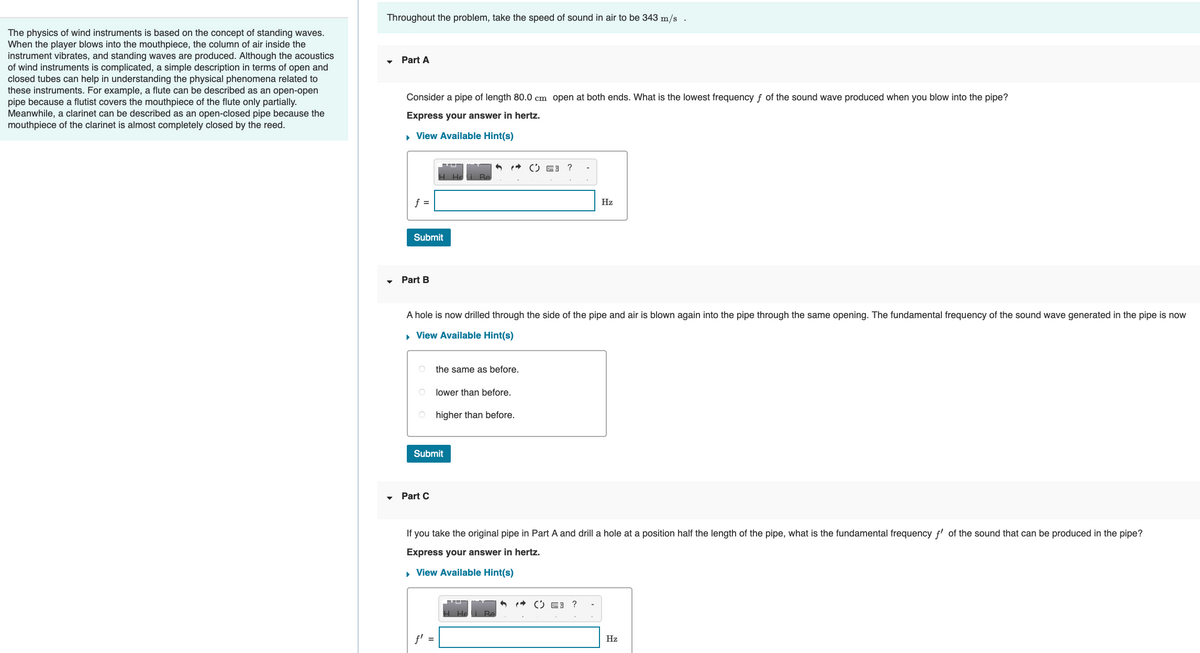Throughout the problem, take the speed of sound in air to be 343 m/s. → Part A Consider a pipe of length 80.0 cm open at both ends. What is the lowest frequency of the sound wave produced when you blow into the pipe? Express your answer in hertz. ▸ View Available Hint(s) Submit → Part B A hole is now drilled through the side of the pipe and air is blown again into the pipe through the same opening. The fundamental frequency of the sound wave generated in the pipe is now View Available Hint(s) the same as before. lower than before. higher than before. Submit → Part C ⒸE? Hz If you take the original pipe in Part A and drill a hole at a position half the length of the pipe, what is the fundamental frequency of the sound that can be produced in the pipe? Express your answer in hertz. ▸ View Available Hint(s)
Properties of sound
A sound wave is a mechanical wave (or mechanical vibration) that transit through media such as gas (air), liquid (water), and solid (wood).
Quality Of Sound
A sound or a sound wave is defined as the energy produced due to the vibrations of particles in a medium. When any medium produces a disturbance or vibrations, it causes a movement in the air particles which produces sound waves. Molecules in the air vibrate about a certain average position and create compressions and rarefactions. This is called pitch which is defined as the frequency of sound. The frequency is defined as the number of oscillations in pressure per second.
Categories of Sound Wave
People perceive sound in different ways, like a medico student takes sound as vibration produced by objects reaching the human eardrum. A physicist perceives sound as vibration produced by an object, which produces disturbances in nearby air molecules that travel further. Both of them describe it as vibration generated by an object, the difference is one talks about how it is received and other deals with how it travels and propagates across various mediums.

Trending now
This is a popular solution!
Step by step
Solved in 3 steps with 1 images









